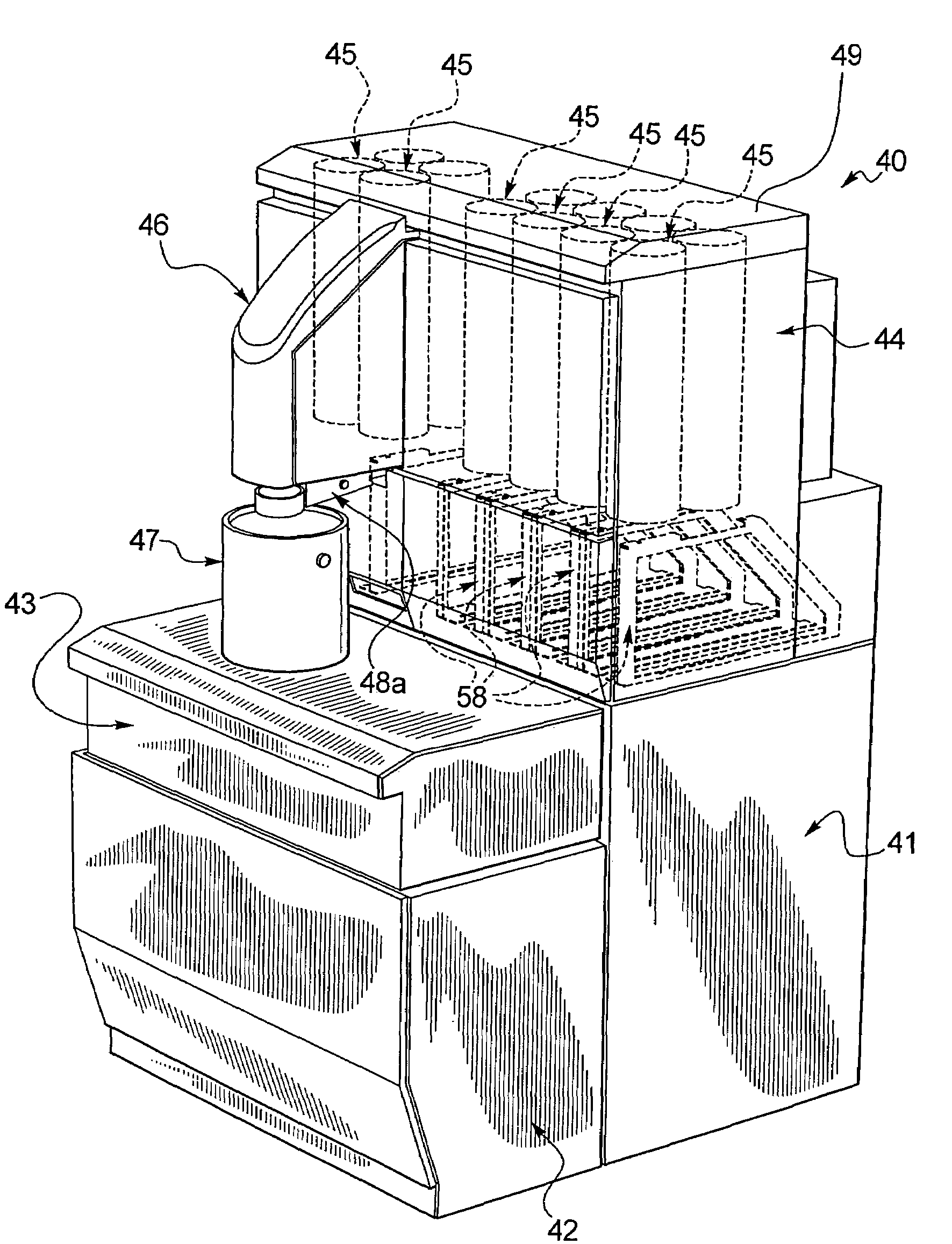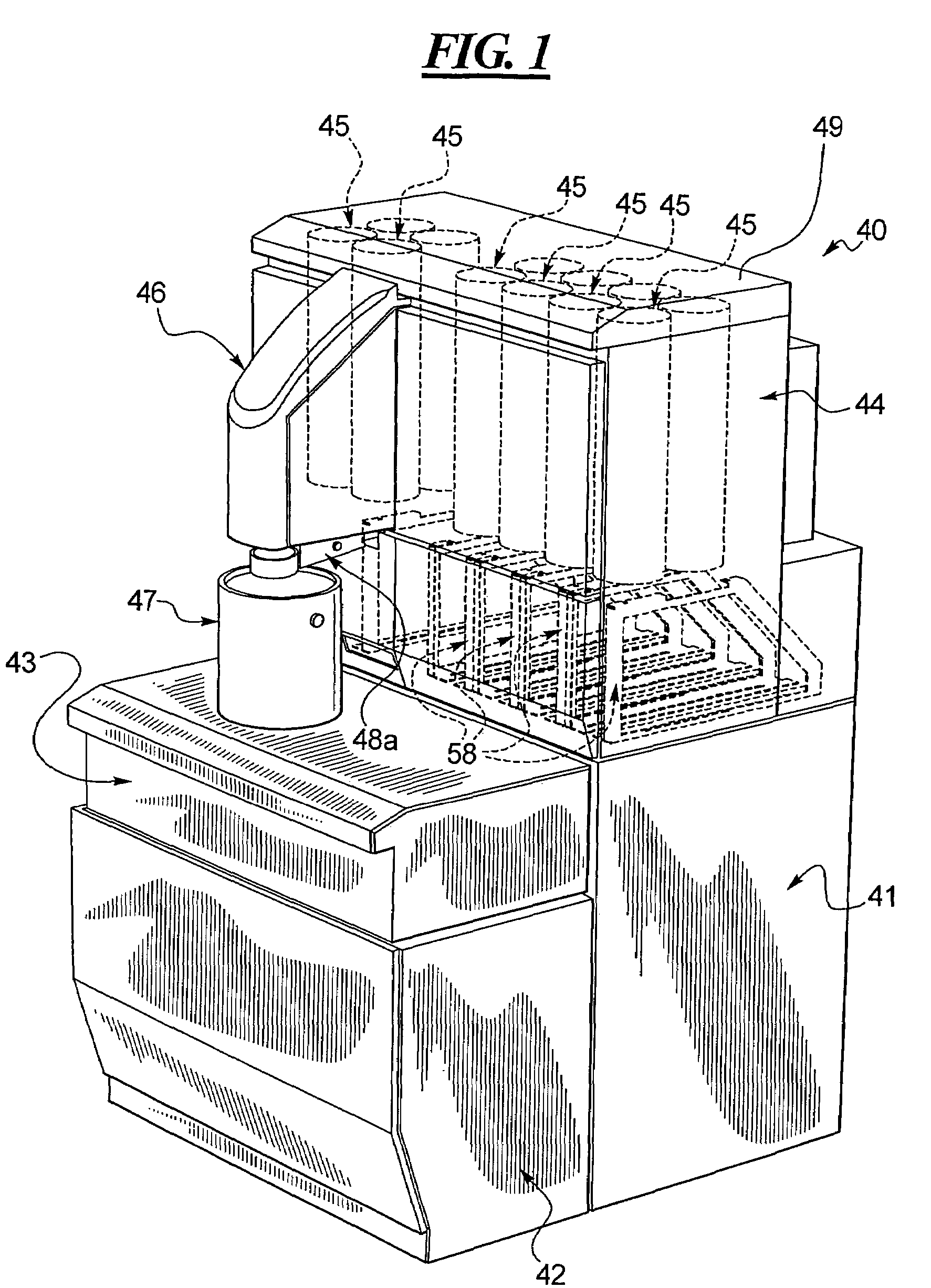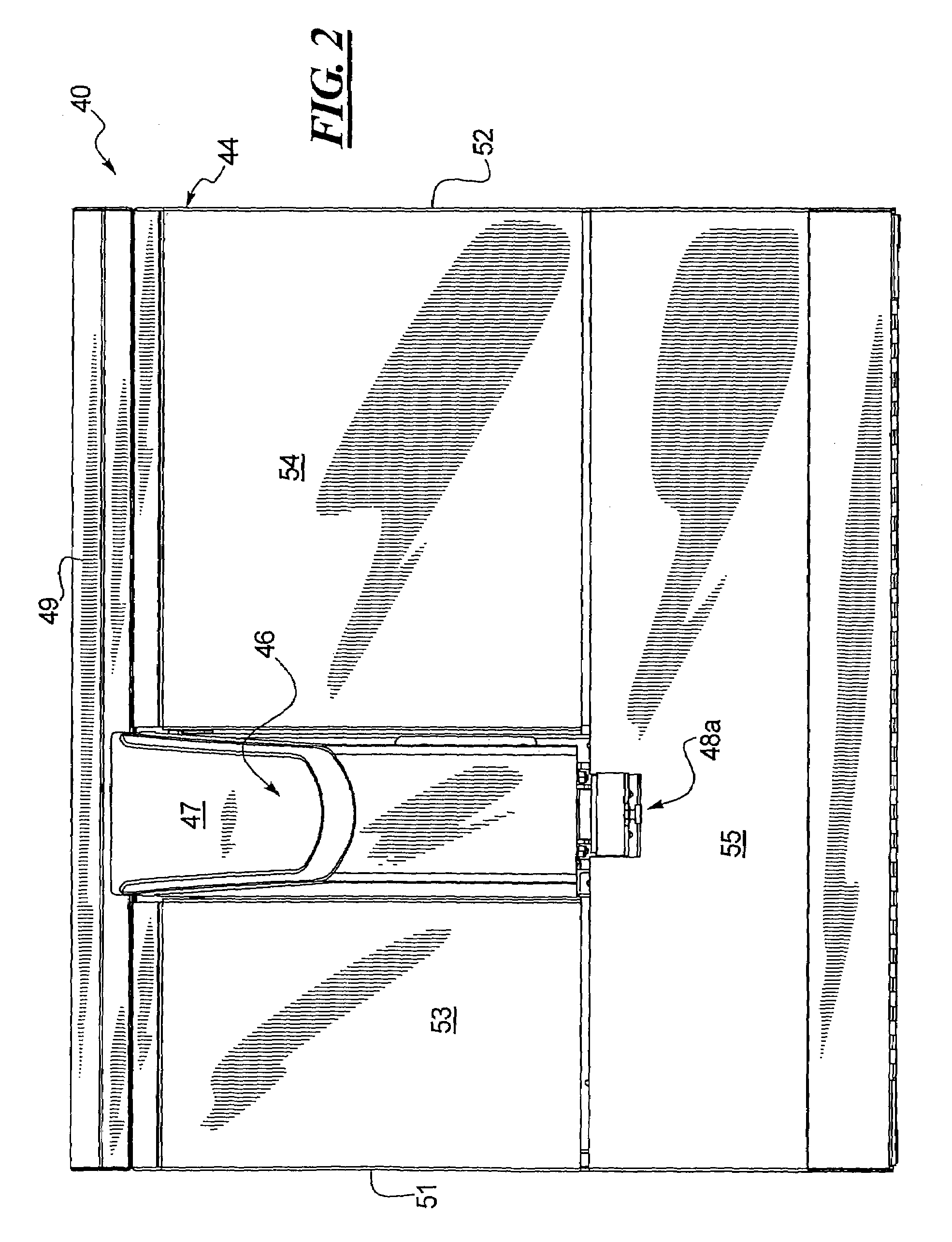Multiple fluid dispenser
a fluid dispenser and fluid technology, applied in liquid transfer devices, liquid handling, packaging goods types, etc., can solve the problems of dripping, slow and inaccurate volumetric dispensing, and inability to accurately dispense fluids, etc., to achieve efficient dripping and less fluid was
- Summary
- Abstract
- Description
- Claims
- Application Information
AI Technical Summary
Benefits of technology
Problems solved by technology
Method used
Image
Examples
Embodiment Construction
[0065]FIG. 1 discloses a dispensing apparatus 40 which includes a lower base portion 41 connected to a front cabinet 42 which, in turn, is disposed beneath in support a middle cabinet shown at 43. The middle cabinet 43 may also include a scale or weighing function (not shown). Any one of the cabinets 41 through 43 may house a controller and other electronic equipment (not shown). The cabinet 41 supports an upper cabinet 44 which, in turn, houses a plurality of modules which are represented by pairs of canisters shown generally at 45. In the examples shown in FIG. 1, six modules that each dispense two different fluids are shown for a total dispending of 12 different fluids. FIG. 1 also illustrates a manifold module 46 which will be described below. The sequential or, preferably simultaneous dispensing of one or more fluids from the 12 difference fluids provided in FIG. 1 is made through the manifold module 46 and down into the container 47. A manifold closure system is shown at 48a. ...
PUM
| Property | Measurement | Unit |
|---|---|---|
| flexible | aaaaa | aaaaa |
| weight | aaaaa | aaaaa |
| size | aaaaa | aaaaa |
Abstract
Description
Claims
Application Information
 Login to View More
Login to View More - R&D
- Intellectual Property
- Life Sciences
- Materials
- Tech Scout
- Unparalleled Data Quality
- Higher Quality Content
- 60% Fewer Hallucinations
Browse by: Latest US Patents, China's latest patents, Technical Efficacy Thesaurus, Application Domain, Technology Topic, Popular Technical Reports.
© 2025 PatSnap. All rights reserved.Legal|Privacy policy|Modern Slavery Act Transparency Statement|Sitemap|About US| Contact US: help@patsnap.com



